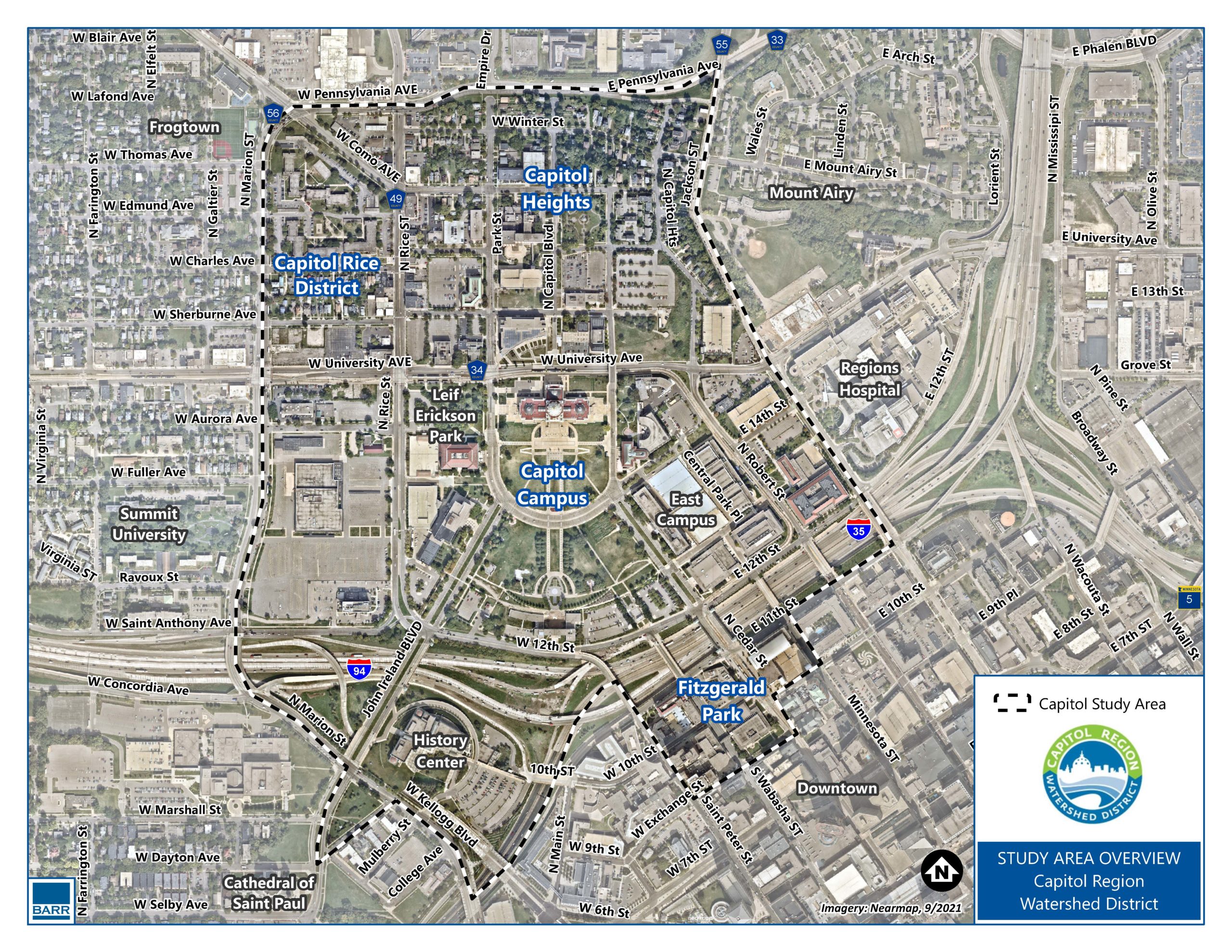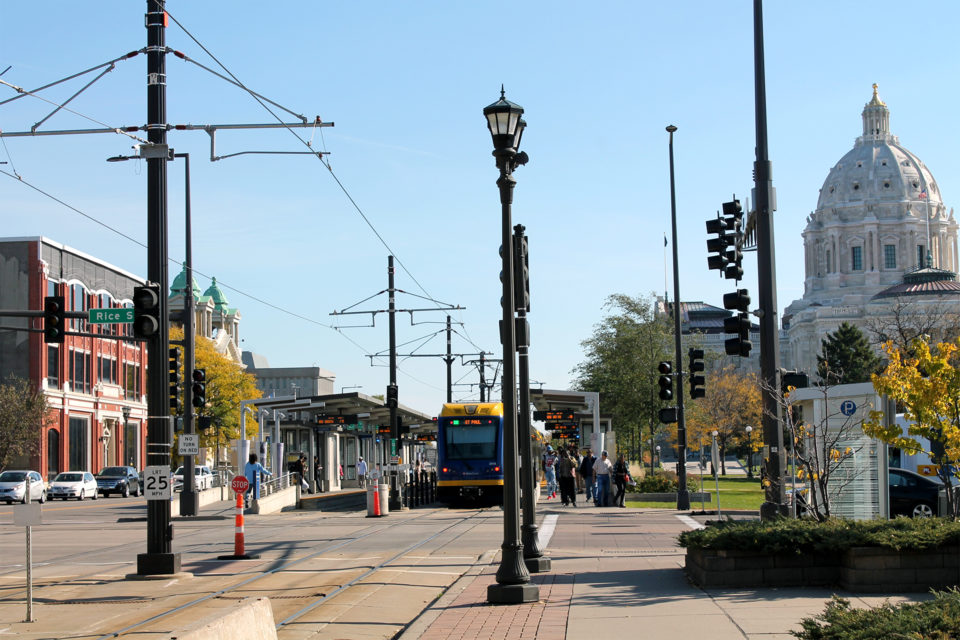Capitol Area Stormwater Management
Capitol Region Watershed District (CRWD) and Capitol Area Architectural and Planning Board (CAAPB) partnered on a stormwater management study to understand water quality and quantity issues in the Capitol Area and identify regional green infrastructure opportunities for improved stormwater management. The study area is approximately 333 acres including 60 blocks in the City of Saint Paul and has four distinct areas:
- • Capitol Campus – the Capitol building and Mall, east campus, and the surrounding area
- • Capitol Rice District – the area to the west of the Capitol that includes the Sears Redevelopment Site
- • Capitol Heights – a neighborhood to the north of the Capitol with steep hillsides and runoff that impacts districts in every direction
- • Fitzgerald Park – five city blocks southeast of the Capitol campus south of the I-94 – I-35E freeway corridor
CAAPB completed its 2040 Comprehensive Plan for the Minnesota State Capitol Area in 2021. The plan seeks to transform the Capitol Area into a healthy community with vibrant public spaces, a range of movement options, diverse land uses and attractive buildings framing lively, pedestrian friendly streets. Projects in this area must apply a holistic lens of economic vitality, energy and environment, health, placemaking and communities to their design. Visions abound in the new plan, including restoration of a walkable diverse urban village pattern at the former Sears site, mobility hub and streetscape improvements in the Capitol Rice corridor, and planning for the landscape of the Capitol Mall.
CRWD and CAAPB believe that stormwater management strategies will be integral to achieving the broader vision and goals in the Capitol Area comprehensive plan. Key stakeholders of the study include State of Minnesota Department of Administration, Minnesota Department of Transportation, City of Saint Paul, Ramsey County, large property owners such as Seritage (owner and developer of the former Sears Site), District planning councils, hospitals, families living several residential districts, and other community organizations.








